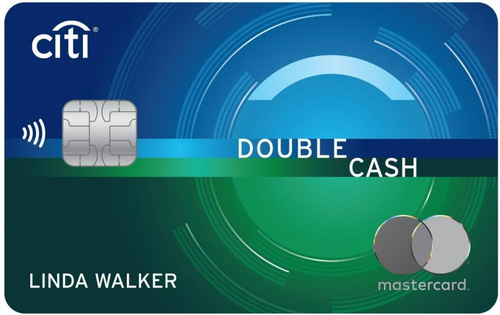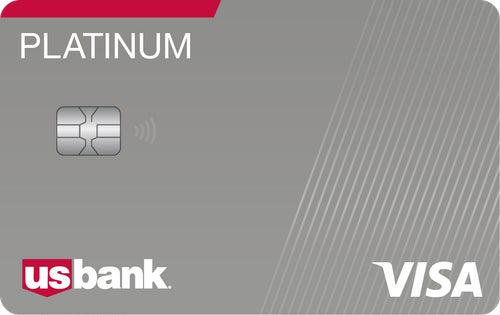































Do you carry a month to month balance and have high interest rates? Do you have pressing financial issues but can't commit to a loan? If these questions apply to you, a balance transfer card might be your solution. These credit cards can be a lifesaver in helping you pay down debt because it momentarily alleviates interest charges. The best balance transfer cards offer 0% APR for up to 21 months.
There are numerous options to choose from, so we compiled your top options for you based off of our extensive research. Once you've selected the best-fitting balance transfer card for your needs, review your outstanding debts and the interest rates associated with each. Transfer the outstanding debt with the highest interest rate to your new balance transfer card. Remember to use the introductory period to take advantage of no interest charges and pay off all of that transferred debt.
Also: Six facts you should know about 0% APR credit cards
Here are the best balance transfer credit cards:
 card highlights intro bonusN/AAPR18.24%, 24.74%, 29.99% variable APRrecommended creditExcellent, Goodreward ratesN/Aannual fee$0 intro purchase APR0% intro APR for 21 months from account openingadditional details intro balance transfer APR0% intro APR for 21 months from account opening on qualifying balance transfersbalance transfer fee5%; min:$5balance transfer APR18.24%, 24.74%, 29.99% variable APRforeign transaction fees3%penalty APRNone
card highlights intro bonusN/AAPR18.24%, 24.74%, 29.99% variable APRrecommended creditExcellent, Goodreward ratesN/Aannual fee$0 intro purchase APR0% intro APR for 21 months from account openingadditional details intro balance transfer APR0% intro APR for 21 months from account opening on qualifying balance transfersbalance transfer fee5%; min:$5balance transfer APR18.24%, 24.74%, 29.99% variable APRforeign transaction fees3%penalty APRNoneThe Wells Fargo Reflect card offers cardholders 21 months to pay down a qualified transferred balance at 0% interest, if the transfer is made within the first 120 days of account opening. There will be a balance transfer fee of 5% ($5 min) applied.
The card has no rewards, but 21 months is a long time to have to pay down a balance. If you need the extra time, this isn't a bad option to choose. It even comes with some useful perks, like cell phone protection and roadside dispatch.
Pro
Cons

 card highlights intro bonusN/AAPR19.24% - 29.24% (Variable)recommended creditExcellent, Good, Fairreward rates
card highlights intro bonusN/AAPR19.24% - 29.24% (Variable)recommended creditExcellent, Good, Fairreward rates The Citi Double Cash Card is a simple card. Use it for every purchase to earn 2% cash back (1% when the purchases is made, 1% when it's paid off). Aside from the strong rewards for no annual fee, it boasts a long intro 0% APR for balance transfers (then 18.99% to 28.99% (Variable)).
It doesn't carry any impressive perks aside from that, however, but it does present a good opportunity to transfer a balance to avoid interest charges. Once the balance is paid off, cardholders will still have a strong credit card to use to rake in the rewards.
Keep in mind using the card for new purchases after transferring a balance isn't the best strategy, unless your monthly payments are large enough to cover both the new purchases and pay down the transferred balance within the intro period.
Pros
Cons

 card highlights intro bonusN/AAPR18.74% - 29.74% (Variable)recommended creditExcellent/Goodreward ratesN/Aannual fee$0 intro purchase APR0% intro APR for 18 billing cycles on purchasesadditional details intro balance transfer APR0% intro APR for 18 billing cycles on balance transfersbalance transfer feeEither 3% of the amount of each transfer or$5 minimum, whichever is greaterbalance transfer APR18.74% - 29.74% (Variable)foreign transaction fees2% of each foreign purchase transaction or foreign ATM advance transaction in U.S. Dollars. 3% of each foreign purchase transaction or foreign ATM advance transaction in a Foreign Currency
card highlights intro bonusN/AAPR18.74% - 29.74% (Variable)recommended creditExcellent/Goodreward ratesN/Aannual fee$0 intro purchase APR0% intro APR for 18 billing cycles on purchasesadditional details intro balance transfer APR0% intro APR for 18 billing cycles on balance transfersbalance transfer feeEither 3% of the amount of each transfer or$5 minimum, whichever is greaterbalance transfer APR18.74% - 29.74% (Variable)foreign transaction fees2% of each foreign purchase transaction or foreign ATM advance transaction in U.S. Dollars. 3% of each foreign purchase transaction or foreign ATM advance transaction in a Foreign CurrencyThe U.S. Bank Visa Platinum, offers cardholders one of the longest 0% intro APR offers for balance transfers.
Cardholders will have 18 billing cycles to pay down the balance at 0% interest before the normal APR of 19.49% to 29.49% (Variable) applies. The intro offer also applies to new purchases. There are no rewards, and there's a balance transfer fee of 3% of the amount transferred or$5 minimum, whichever is greater.
Pros
Cons

If you're struggling to manage your high interest rates or need breathing room to tackle your key financial issues, a balance transfer credit card is a great option. If the following situations apply to you, it's worth considering a balance transfer card:
Most credit card companies charge a fee on any balances transferred. The fee is usually a percentage or minimum dollar amount of the total balance transferred (3-5% or$5-10, depending on the credit card issuer). The credit card company you transfer the debt to is the one that collects the fee.
Once you have selected the best balance transfer credit card for your needs, you can find information on the credit card's website on how to initiate a balance transfer. You can also call their customer support number for one-on-one assistance. Overall, the process is relatively straightforward for cardholders planning to transfer their balance. Here are a few steps:
Make sure you keep making payments towards your original card until the transfer closes to avoid late fees and other penalties, and then transfer your balance before the new card's introductory offer ends.
Let's cut to the chase: the not-so-great news is that your credit may be impacted after completing a balance transfer, but the good news is that credit scores are resilient. A balance transfer may temporarily lead to your credit score dropping because you'll decrease your average account age and increase the credit utilization on a card. However, each situation is unique and depends entirely on your creditworthiness.
Your credit should go up again if you use credit responsibly over time and pay your credit card bill on time every month, particularly since payment history accounts for a significant impact on a credit score. When you finally pay off your accruing debt, your credit score will likely go up. Here's a list of credit score components that are most likely to be impacted by a balance transfer:
Also: The best credit cards for good credit
No matter the type of credit card, responsible card use is very important. Credit cards should not be used to charge something you cannot afford. However, when life happens, and emergencies make this unavoidable, a good balance transfer card can save you many dollars and many years of the burden of debt. Be sure to read the fine print and avoid unwanted surprises later.
The value of a balance transfer offer usually depends on the balance transfer fee. One of the downsides to a balance transfer is that there may be a fee involved, normally between 3-5%. For example, if you owe roughly$5,000 on credit, then it could cost you anywhere from$150 to$250 to transfer the balance. If you have to pay a fee to transfer a balance, compare how much you're paying in interest to the fee to make sure the transfer will help save money in the long run. As long as you can pay off the balance transferred before your 0% APR period ends and the amount of interest you could pay on the original card is more than the balance transfer fee, then it may be worth transferring.
Balance transfer fee tip: Most people don't realize that balance transfer fees are negotiable. That's especially true if you're a new customer, as many credit card issuers will waive certain fees to get you to sign the dotted line (if you're approved). The smart move is to contact the credit card company you're interested in and ask if they are willing to negotiate.
Having your balance transferred from one card to another may require some patience. The amount of time it takes to transfer your balance can vary, depending on the credit card issuer and whether or not you are transferring your balance to a brand new credit card or one you already have in your wallet.
Chase can take up to 21 days for a balance transfer. It's an inexact science, but you can regularly check your accounts to see when the transfer processes. It's wise to time the beginning of your balance transfer process right after you've made a payment to avoid risking a late payment fee on your existing account. Make sure you continue to make minimum payments on the card you transferred the balance from until the process is complete.
Also: The best secured credit cards for your business
Introductory APR and term: Many (but not all) balance transfer cards offer an introductory annual percentage rate that lasts for a certain number of billing cycles before changing to the regular annual percentage rate.
Regular APR: Once the introductory rate is over, the regular annual percentage rate will become your new rate.
Balance transfer fee: Many cards charge a fee that applies to the balance transferred. This fee is usually a percentage of the total balance.
Annual fee: While many balance transfer cards waive the annual fee for the first year, some will charge an annual fee thereafter.
Credit score needed for approval: It is important to know if your credit score is high enough to be considered for approval.
Rewards: Many balance transfer cards offer rewards for travel, everyday spending or cashback.
[This article was first published on The Simple Dollar in 2020. It was updated in March 2022.]
 Tags chauds:
Notre processus
finances
Cartes de crédit
Tags chauds:
Notre processus
finances
Cartes de crédit